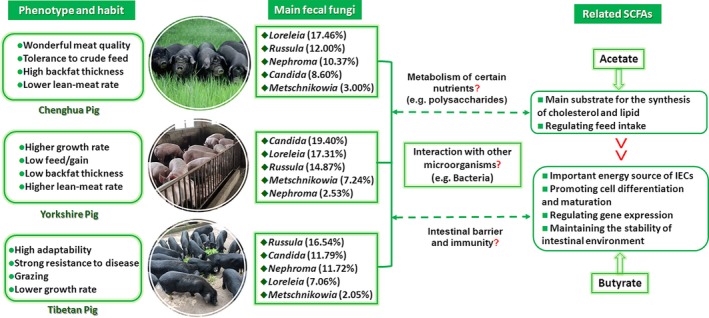Figure 6.

The possible linkage between the genotypes and phenotypes of host, environment and habits, the community of intestinal fungi, as well as the environmental factors (such as the metabolites of other microorganisms). The habitats and habits of animals may largely influence the composition of intestinal fungi. During feeding, fungi in the surrounding environment may be introduced into the GI tract through contact with soil, pasture (such as grazing Tibetan pig), green forage (such as Chenghua pig) or licking the housing facilities. This may also be one of the reasons why fungi that are widely found in the environment are also observed in abundance in the gut of pigs in the current study. In addition, the community of fungi in the gut of pigs exhibited a close relationship with some main metabolites of bacteria, such as acetate and propionate, suggesting that intestinal fungi may be involved in the regulation of metabolic process of some nutrients (e.g. complex carbohydrates) and the health of the intestine (e.g. the maintenance the function of intestinal epithelial) of pigs. Thus, further research should focus on the interaction between fungi and bacteria in the GI tract. Although the population of fungi is relatively small in the gut of monogastric animals (e.g. pig), which has resulted in less attention devoted to intestinal fungi in previous studies, our results show that fungi in the gut should not be ignored in future studies.
